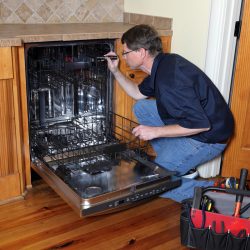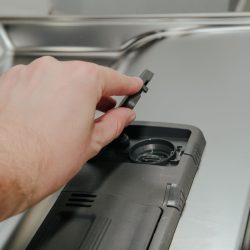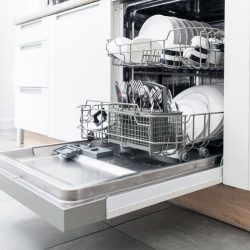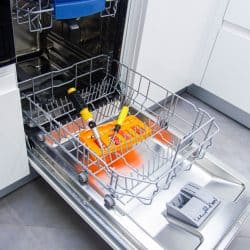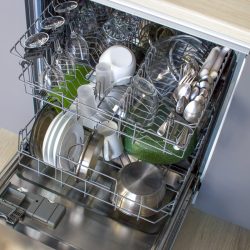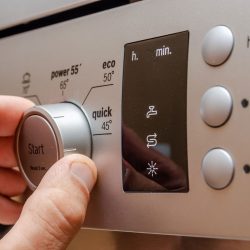If your KitchenAid dishwasher is not functioning properly, it can be a very frustrating experience-- especially if you have a large household. One of the most common issues with dishwashers is that they don't dry the dishes properly, which can have many causes. We've done a bit of research on KitchenAid dishwashers specifically to determine the most common reasons for this. In this post, we will discuss them as well as how to remedy them.
If your KitchenAid dishwasher isn't drying properly it could be due to component failure or improper loading and unloading. Here are a few ways to resolve this issue:
- Ensure That The Drying Temperature Is Not High Enough
- Use Rinse Aid
- Check The Heating Element
- Check The Fan Motor
- Inspect the Vent
- Be Sure That You're Loading The Dishes Correctly
- Be Sure to Unload The Dishes Correctly
- Wait It Out (If The Dishwasher Is New)
- Check The Limit Switch
The best way to begin troubleshooting your KitchenAid dishwasher is to take a look at the instruction manual. It will provide you with a list of checks to go through to determine the cause of the drying issue, as well as a visual diagram illustrating the components of the dishwasher. Read on to learn about how to determine why your dishes aren't drying properly.
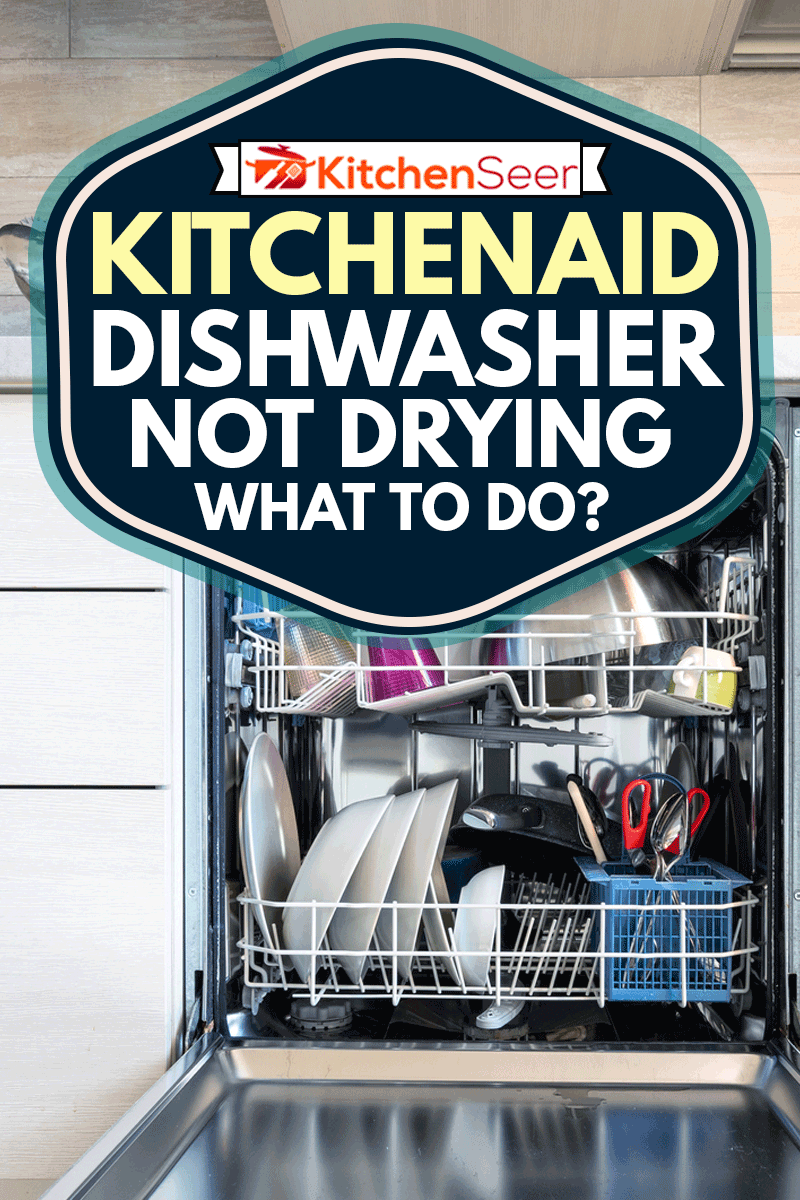
Reasons Why Your KitchenAide Dishwasher Isn't Drying Correctly
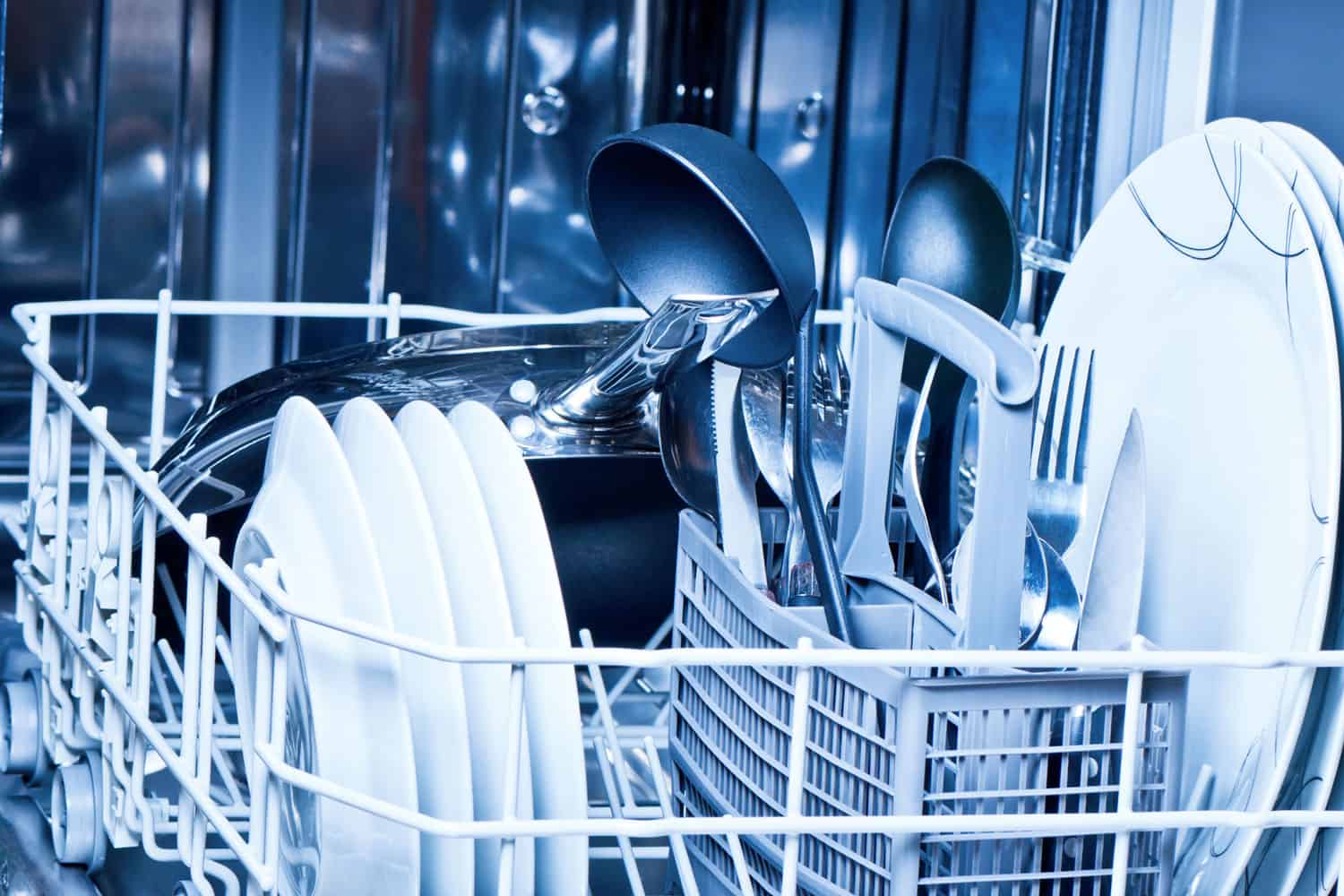
Ensure That The Drying Temperature Is Not High Enough
For optimal drying, KitchenAid dishwashers require a water temperature of 120 degrees Fahrenheit. If the temperature is significantly lower than this, the dishes simply won't dry completely. On the opposite end, water temperatures that are too high can negatively affect the ingredients in the dishwashing detergent-- which may cause it to lose its cleaning ability.
Consider changing the drying temperature on your dishwasher to see if it helps to dry the dishes faster. Also, try running hot water in the kitchen sink for about 30 seconds to one minute before operating the dishwasher. This will ensure that hot water into the dishwasher as soon as its drying cycle begins.
Use Rinse Aid
One of the best ways to improve your KitchenAid dishwasher's overall performance is to use a quality rinse aid. In some models, the rinse aid will be more effective at reducing the amount of moisture left on the dishes. Also, some drying options may specifically require the use of a rinse aid to dry the dishes thoroughly.
Check The Heating Element
Your KitchenAid dishwasher can also have a malfunctioning heating element. Heating elements can wear out over time just like any other component in an appliance. The heating element is the circle or horseshoe-shaped metal rod that works to heat the dishwasher for its drying cycle. It's usually located on the front panel of the dishwasher and can easily be removed.
You can use a multimeter to test the functionality of your heating element. If it turns out that the heating element is no longer functional, it will need to be removed and replaced. The good thing is that they are relatively inexpensive to replace and typically cost anywhere from $10 to $15.
Check The Fan Motor
KitchenAid dishwashers have a fan attached to their motor, which works to blow the vent's heated air. If this fan motor malfunctions, the dry air will not make it to the dishes, and they will remain wet during the dry cycle. You can also use a multimeter to test the fan motor for continuity. These motors can be on the pricey side, depending on the dishwasher's model, but they typically range from $50 to around $100 each.
Inspect the Vent
A malfunctioning vent can also prevent the dishwasher's heated air from reaching the dishes, leaving them wet at the end of the drying cycle. Sometimes vents can simply wear out, and when they do, they will not open or close properly. A bad vent will need to be replaced as soon as possible, as continued use can cause hot air to stay trapped inside the dishwasher and may lead to issues with other components later on. You may be able to replace the vent yourself if you have technical knowledge of dishwashers. If not, you may need to contact a professional.
Be Sure That You're Loading The Dishes Correctly
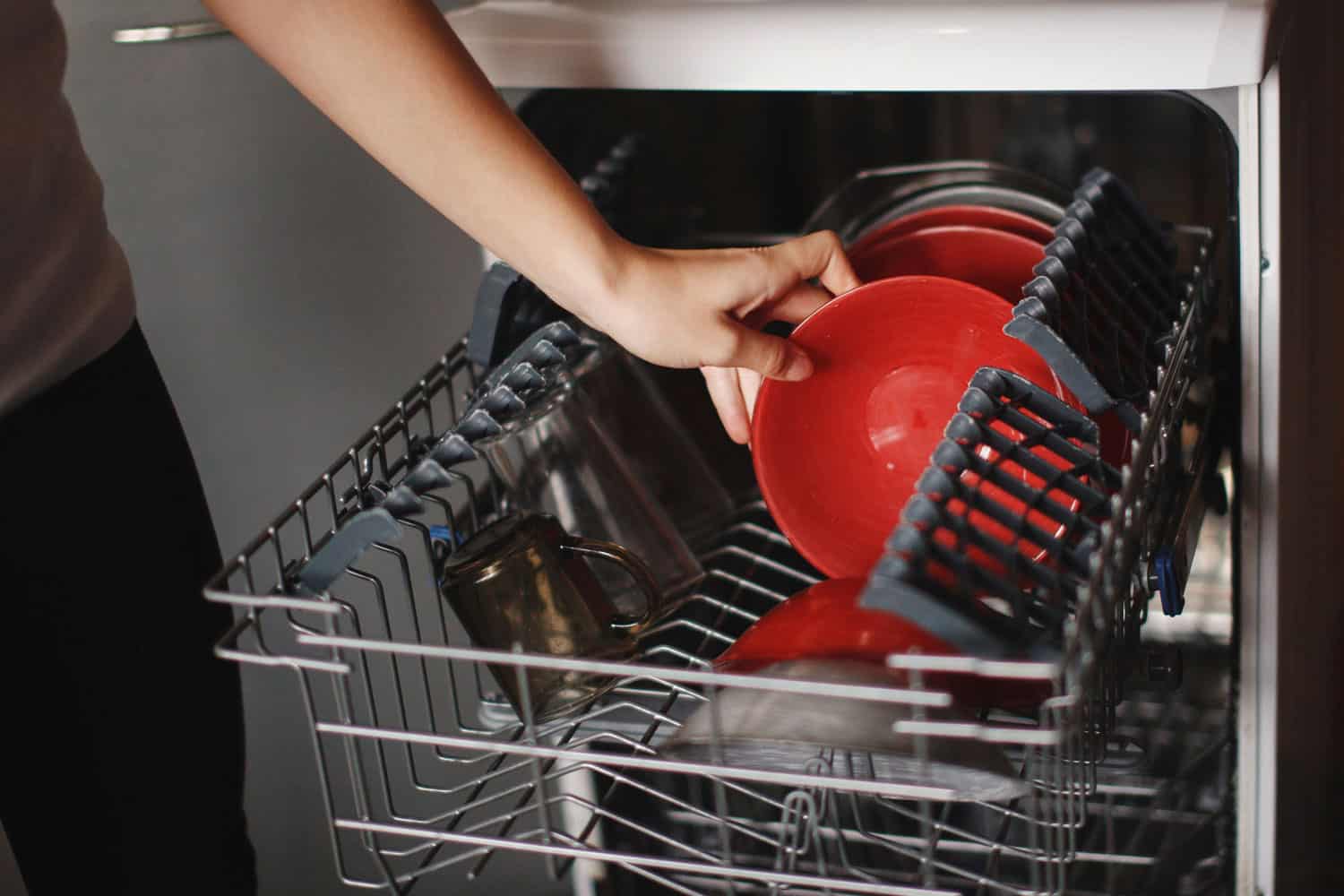
Loading dishes improperly can definitely affect the drying capability of your dishwasher. When dishes are placed too close together, the dishwasher's heat cannot reach their surface and its entirety, which results in dishes that may be dry on one side and wet on the other.
Let's discuss the best ways to load your KitchenAid dishwasher:
- Always place dishes in the dishwasher at an angle, especially mugs and cups.
- Use the top rack for cups and bowls.
- Use the bottom rack for cups and plates.
- Make sure that cups and plates do not "cup" together, as it can prevent them from drying.
- Place plates on the bottom rack and position them in the same direction.
- Do not overload the silverware basket--there should be space between the silverware.
Be Sure to Unload The Dishes Correctly
You may not even be aware of the fact that you are unloading your dishwasher incorrectly. This is when you unload the top rack before the bottom rack, a method that can cause water to drip from the dishes on the top rack to those beneath them. Always unload the bottom rack first.
Wait It Out (If The Dishwasher Is New)
Similar to other dishwasher brands, KitchenAid dishwashers may take one to two weeks of regular usage before they are completely calibrated and able to reach their optimal drying potential. In which case, the best thing to do is to continue using the dishwasher at least a few times a week to see if this resolves itself.
Check The Limit Switch
Some KitchenAid dishwashers are also designed with a limit switch, which becomes activated if the dishwasher becomes too hot. If the limit switch malfunctions, the heating element will not activate at all. Check your user's diagram to determine if you have a limit switch and where it is located. You can use a multimeter to test the switch for continuity. Depending on your dishwasher model, a new limit switch will cost anywhere from $15 to $65 (or more).
How Do You Test Your Dishwasher Thermostat?
To test the thermostat on your dishwasher, you will need a multimeter device, which can be purchased online or at any local home improvement store. The specific location of the thermostat will vary by the dishwasher's brand and model. Here are the general steps to locate it and test it:
- Reach beneath the sink and unplug the dishwasher's power supply.
- Check your user's manual to locate the dishwasher's thermostat (usually located at the bottom of the tub next to the access panel).
- Place your multimeter on the "Rx1" mode and place the metal probe on the surface of the thermostat's terminals. The multimeter will give a reading of "infinity" if the thermostat is functioning properly.
If it doesn't test as "infinity," the thermostat may need to be replaced with a new one. You can typically purchase thermostats for around $35 to $50, depending on your dishwasher model.
How Can You Boost Your Dishwasher's Drying Ability?
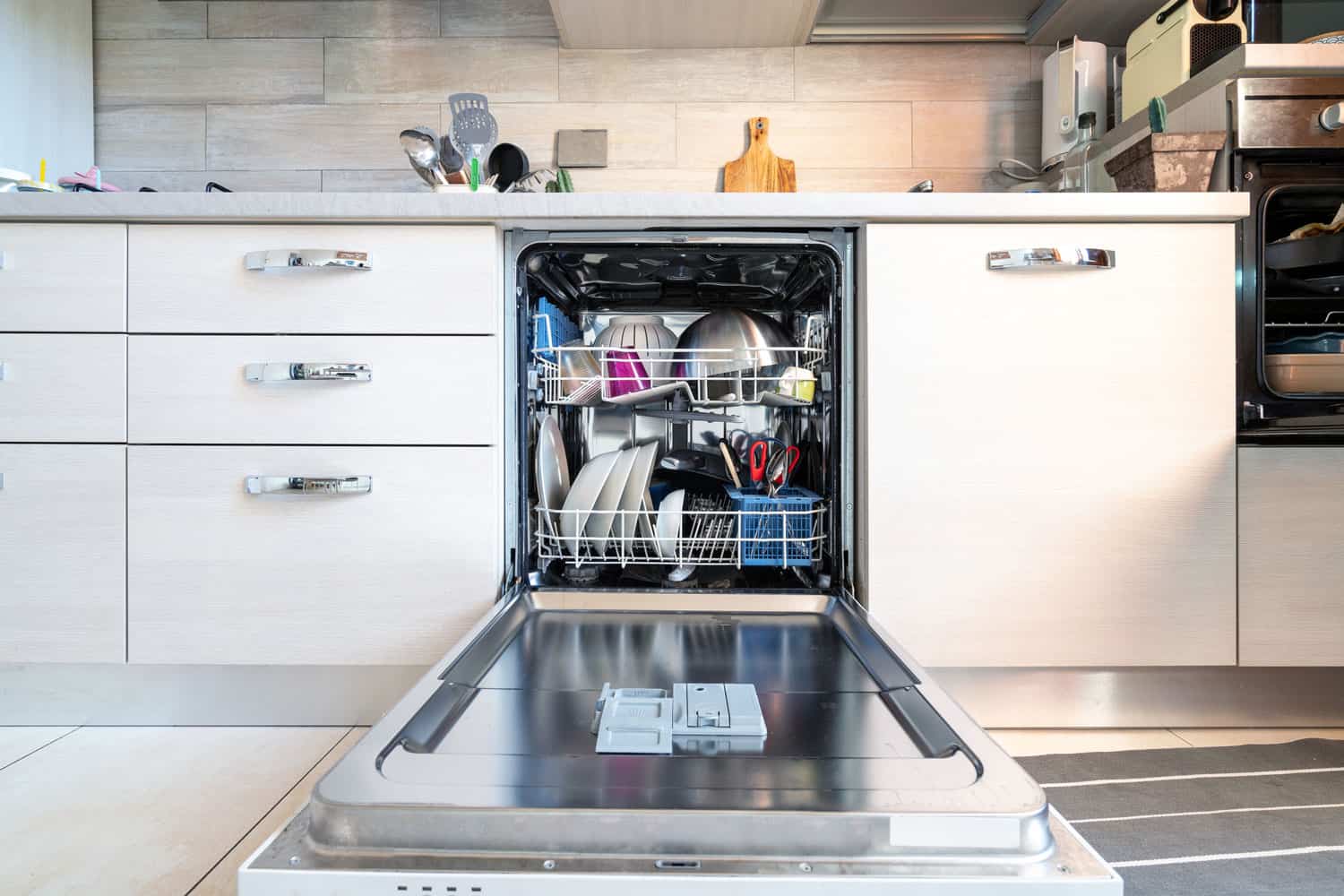
Even if you have the most basic dishwasher, there are ways that you can help to improve its drying ability. Let's look at a few of them:
- Use a rinse aide every time you wash a load. Not only do rinse aides help to prevent dishes from spotting, but they work to breakdown the water molecules on the dishes so that they may dry faster.
- Become familiar with your dishwasher's drying options to ensure that you are using the best one for each specific dish load (you may also want to refer to your owner's manual. After the dishwasher completes a drying cycle, open up the door to release the hot steamy air.
- Create sufficient spacing between each dish. Be sure that your dishes do not touch one another after they are placed in the dishwasher. This is especially true for bowls and plates, which are larger and prone to "cupping", which prevents effective trying.
Is It Better To Air Dry Your Dishes?
Air drying your dishes isn't necessarily better than other drying methods. However, it can be more sanitary than dry towel usage. The biggest downside is that it will take longer.
Wrapping Things Up
Hopefully, this post has helped you understand the various reasons that may prevent a KitchenAid dishwasher from drying properly. If you have tried to troubleshoot your dishwasher on your own and are still unable to determine the cause of the issue, it may be best to call an appliance professional.
Before you go, be sure to check out our other posts:
Are Plastic Food Containers Dishwasher Safe?
Can You Put a Pasta Maker in the Dishwasher?



